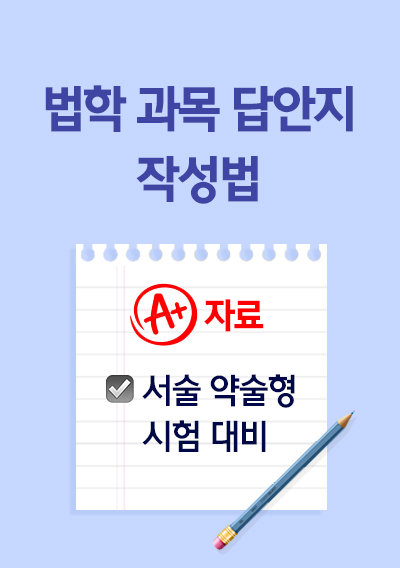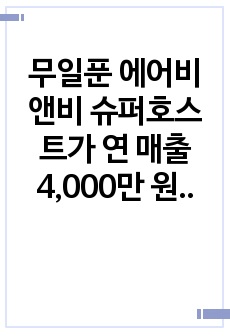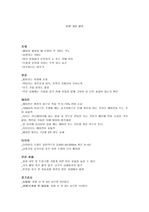* 본 문서는 배포용으로 복사 및 편집이 불가합니다.
서지정보
ㆍ발행기관 : 한국환경생태학회
ㆍ수록지정보 : 한국환경생태학회지 / 37권 / 3호
ㆍ저자명 : 손희정, 원수연, 전정은, 박은희, 김도희, 한상학, 송영근
목차
요 약
ABSTRACT
서 론
연구방법
1. IUCN GET 데이터 체계 검토
2. 국내 GET 유형별 지도 제작
결과 및 고찰
1. IUCN 제공 국내 GET 분석
2. 토지유형별 GET의 국내 적용 과정
3. 토지피복지도를 활용한 IUCN GET 유형 분류
REFERENCES
한국어 초록
인간 활동으로 광범위한 자연 생태계 변화로 지난 몇 세기 동안 전 세계적으로 생물다양성이 심각하게 위협받고 있다. 생태계의 변화 양상을 파악하는 것은 생물다양성 위협을 파악하고 관리하는 데 필수적이다. 이러한 필요성에 따라 IUCN 의회는 2019년에 생태계의 기능과 유형을 고려한 IUCN Global Ecosystem Typology(GET)를 구성했다. IUCN은 10개의 생태계 군계, 108개의 생태기능별 토지 유형(EFG; Ecological Functional Group)을 전 지구적 범위에서 지도로 제공하고 있다. IUCN GET 생태계의 유형 분류에 따르면 국내 생태계는 Realm (1수준)이 8개, Biome (2수준)이 18개, Group (3수준)은 41개 유형으로 분류된다. IUCN이 제공하는 GET의 경우 전 세계 규모로 제작되었기 때문에 해상도가 낮고 실질적인 토지 현황과 일치하지 않는 경우가 많다. 본 연구는 토지피복지도를 활용하여 국내 IUCN GET 유형 분류의 정확도를 높이고 실질적인 현황 을 반영한 지도를 제작하고자 했다. 이를 위해 ① IUCN GET에서 제공하는 국내 GET 데이터 체계를 검토하고, ② 이를 국내 현황과 비교 분석하였다. 이 과정을 통해 GET의 한계와 활용 가능성을 평가하고 ③ 이후 국가자료를 최대 한 활용하여 국내 현황을 반영한 국내 GET 유형 분류를 수행하였다. 본 연구는 토지피복지도와 기존 국가자료를 최대한 활용하여 국내 GET를 총 25개 유형으로 분류했다(Terrestrial Realm :9, Freshwater: 9 Marine-Terrestrial:5, Terrestrial-Freshwater :1, Marine-Freshwater-Terrestrial:1). 기존 지도와 비교했을 때 수정된 국내 GET의 경우 ‘F3.2 Constructed lacustrine wetlands’, ‘F3.3 Rice paddies’, ‘F3.4 Freshwater aquafarms’, ‘T7.3 Plantations’가 면 적이 가장 많이 축소되었다. 온대 산림(T2.2)의 면적이 가장 많이 늘어났고, ‘MFT1.3 Coastal saltmarshes and reedbeds’, ‘F2.2 Small permanent freshwater lakes’등 3개 유형 또한 수정 후 GET 면적이 증가했다. 해당 과정을 통해 기존 GET에서 모든 EFG의 합이 국토 면적의 8.33배를 차지하던 기존의 지도를, 토지피복지도를 활용하여 총합 이 국토 면적의 1.22 배가 되도록 수정하였다. 이를 통해 유형별 차이가 작고 정확성이 떨어진 기존의 EFG가 본 연구를 통해 개선 및 수정되었음을 확인하였다. 본 연구는 현장 요건을 반영한 데이터를 최대한 활용하여 GET 기준 에 상응하는 한국의 GET 지도를 제작한 것에 그 의의가 있다.
영어 초록
Over the past few centuries, widespread changes to natural ecosystems caused by human activities have severely threatened biodiversity worldwide. Understanding changes in ecosystems is essential to identifying and managing threats to biodiversity. In line with this need, the IUCN Council formed the IUCN Global Ecosystem Typology (GET) in 2019, taking into account the functions and types of ecosystems. The IUCN provides maps of 10 ecosystem groups and 108 ecological functional groups (EFGs) on a global scale. According to the type classification of IUCN GET ecosystems, Korea’s ecosystem is classified into 8 types of Realm (level 1), 18 types of Biome (level 2), and 41 types of Group (level 3). GETs provided by IUCN have low resolution and often do not match the actual land status because it was produced globally. This study aimed to increase the accuracy of Korean IUCN GET type classification by using land cover maps and producing maps that reflected the actual situation. To this end, we ① reviewed the Korean GET data system provided by IUCN GET and ② compared and analyzed it with the current situation in Korea. We evaluated the limitations and usability of the GET through the process and then ③ classified Korea’s new Get type reflecting the current situation in Korea by using the national data as much as possible. This study classified Korean GETs into 25 types by using land cover maps and existing national data (Territorial realm: 9, Freshwater: 9, Marine-territorial: 5, Terrestrial-freshwater: 1, and Marine-freshwater-territorial: 1). Compared to the existing map, “F3.2 Constructed lacustrine wetlands”, “F3.3 Rice paddies”, “F3.4 Freshwater aquafarms”, and “T7.3 Plantations” showed the largest area reduction in the modified Korean GET. The area of “T2.2 Temperate Forests” showed the largest area increase, and the “MFT1.3 Coastal saltmarshes and reedbeds” and “F2.2 Small permanent freshwater lakes” types also showed an increase in GET area after modification. Through this process, the existing map, in which the sum of all EFGs in the existing GET accounted for 8.33 times the national area, was modified so that the total sum becomes 1.22 times the national area using the land cover map. This study confirmed that the existing EFG, which had small differences by type and low accuracy, was improved and corrected. This study is significant in that it produced a GET map of Korea that met the GET standard using data reflecting the field conditions.
참고 자료
없음


























